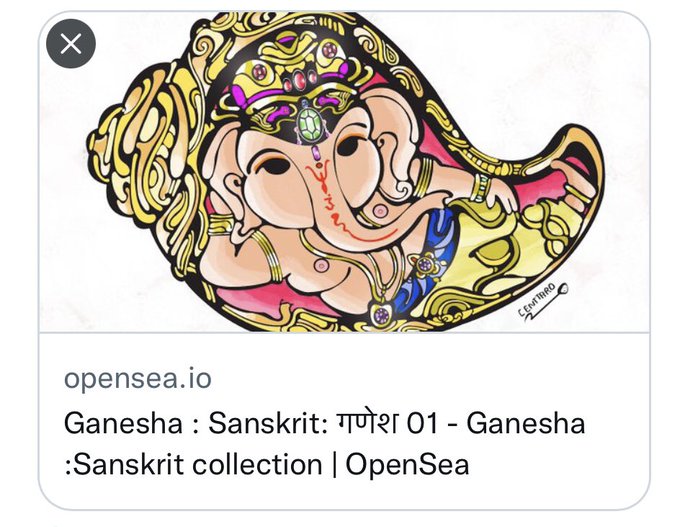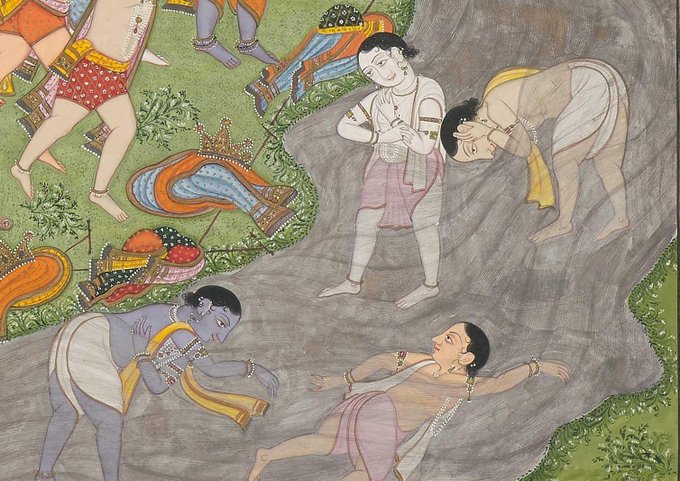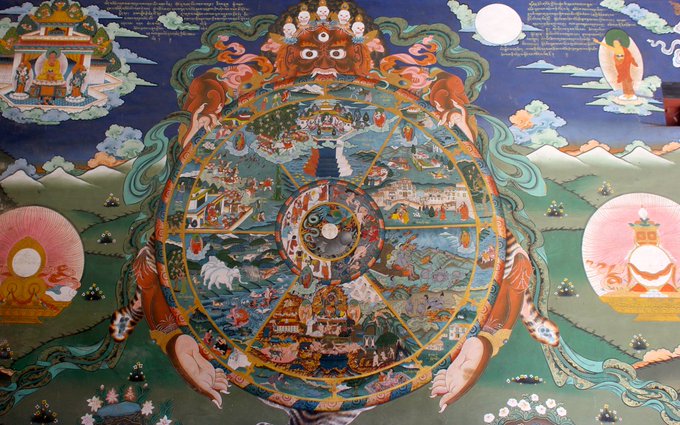sanskritのTwitterイラスト検索結果。 225 件中 7ページ目
Visualizing the entire Sanskrit data available in the BuddhaNexus in a graph with modularity detection and PageRank, different groups such as Buddhist, Purāṇic, Vedic literature and more align nicely in a big circle. Strikingly, one group always stays in the center, what is it?
Krishna and the gopas bathe in the Saraswati and pray to the goddess.
Gouache and gold on paper
Takri script above, Sanskrit inscription on verso
Pahari, Nalagarh? (1850s)
Schuler Auktionen, Zurich
Navagraha; nava (Sanskrit: "nine") & graha ("planet, seizing, laying hold of, holding") are nine* 'wandering' stars. Surya commanded the visible planets* & was a master of Light by the end* of Treta-yuga (3100 BC)
Vikaralamon
(Vikala: Sanskrit name of Buddha)
Holy Beast
Attacks:
Suukara
Bao Lun
Memang elemen-elemen itu adalah asas kepada identiti dan budaya Melayu tradisional. Tak boleh nak lari. Tapi begitu juga dengan elemen mengangkat sembah ke Sultan.
Sembah atau ‘anjali mudra’ dalam sanskrit (अञ्जलि मुद्रा) adalah simbol hormat. Ada tiga cara dalam budaya india. https://t.co/TqL3ACQai4
Indian Vimana are Vedic flying temples. Just nythology or were there such flying devices in reality?
#temple #asia #india #ancientastronauts #sanskrit #vimanas #hindu #fantasy #ancientegypt #ancientaliens #aliens #ufos #extraterrestrials #conceptart #comicbooks #anime #vedic
Kalila wa-Dimna is a collection of fables written in Sanskrit 4th C. BC. Translated into Arabic in 8th C by Abdullah ibn al-Muqaffa.
The only available #Ethiopian version is a marginal note dated 1582 in MS Or 534; a strong evidence that a complete Ethiopian version existed
Corrected version, ऐ was incorrectit is supposed to be ए #Sanskrit
The cycle of rebirth only comes to an end with moksha, liberation from the cycle of rebirth. The word moksha derives from two Sanskrit roots- moha meaning delusion and kshaya meaning destruction.
For evidence of its antiquity we can trace a long enough pedigree through history, mythology, literature and art. Pomegranate has its name in Sanskrit; it appears in sculptures in Assyria and Egypt; it is mentioned in the Old Testament and in the Odyssey. https://t.co/kSIcFuktGK
In his early years, Guru Teg Bahadur learned Gurmukhi, Hindi, Sanskrit and Indian religious philosophy from Bhai Gurdas, and archery and horsemanship from Baba Budha while his father Guru Hargobind Ji, Master of Miri and Piri taught him swordsmanship.
















































